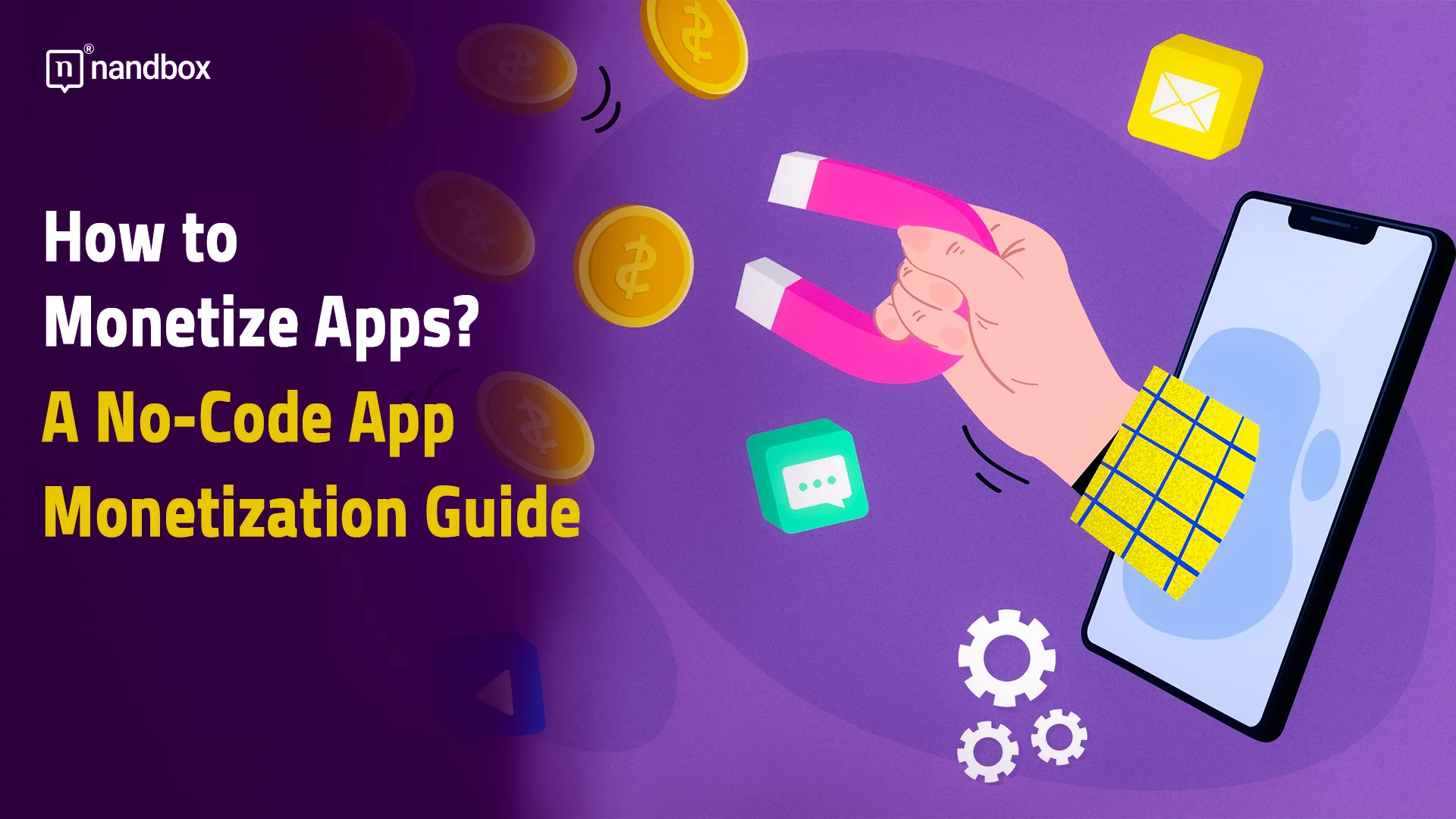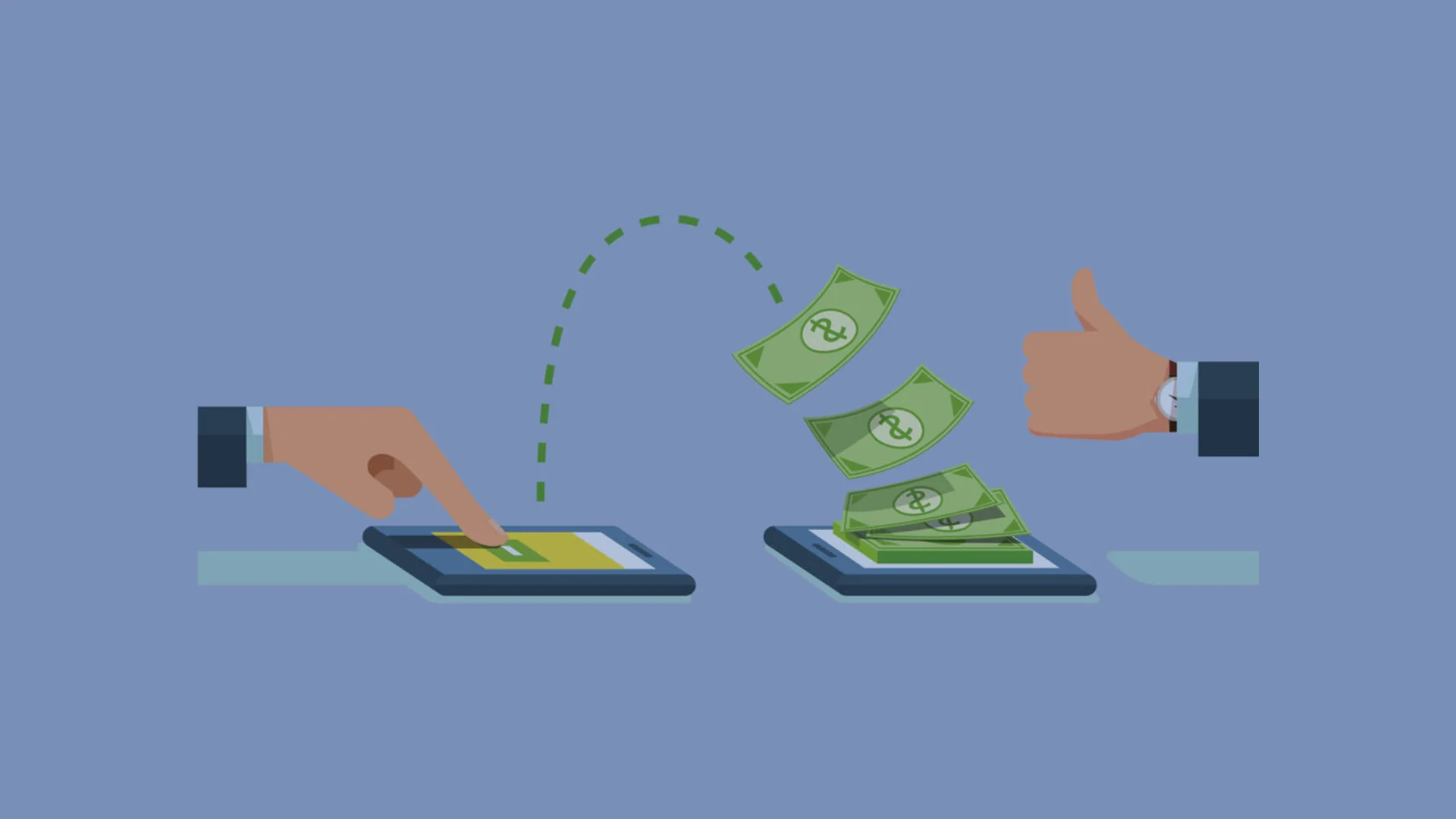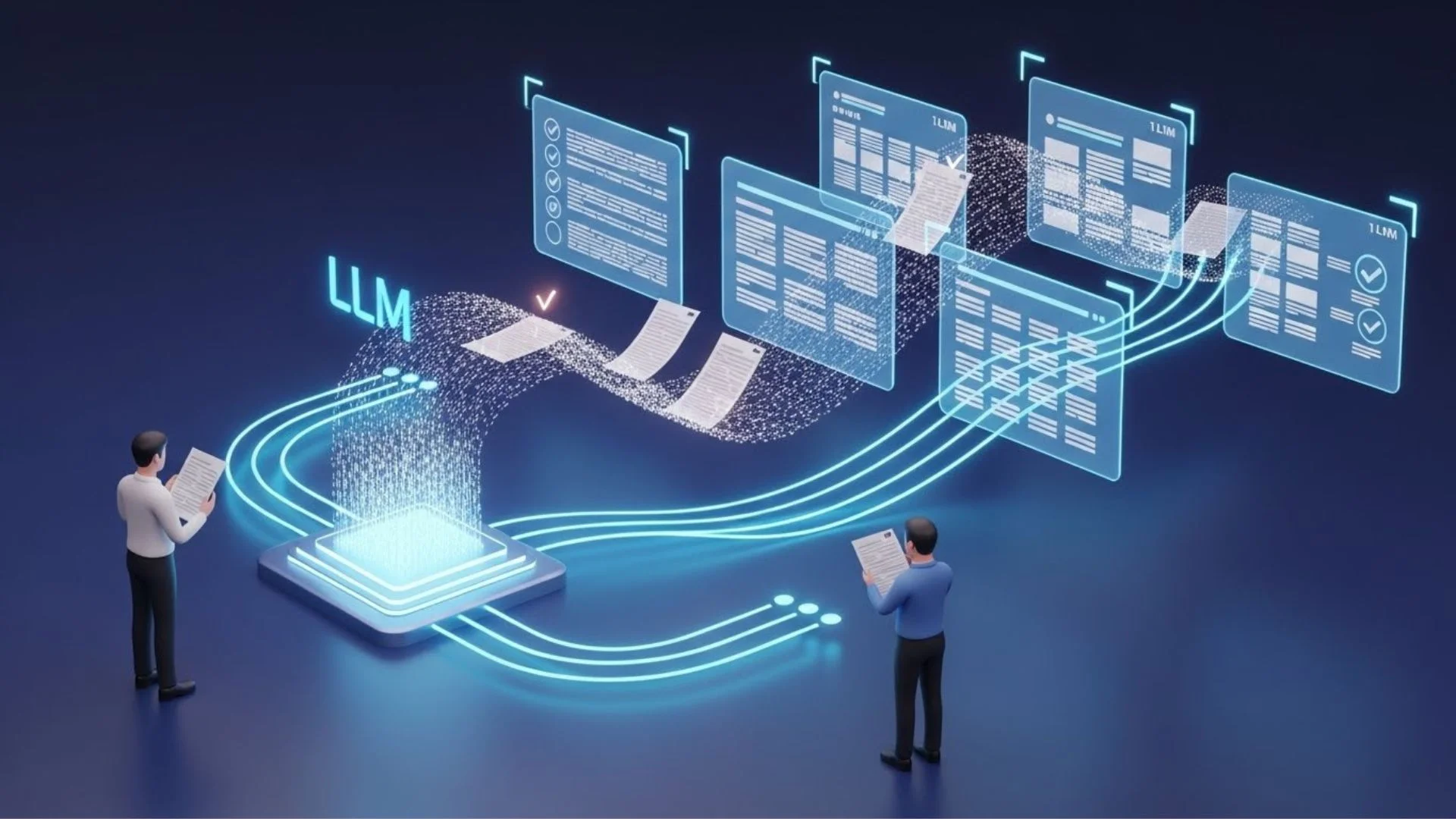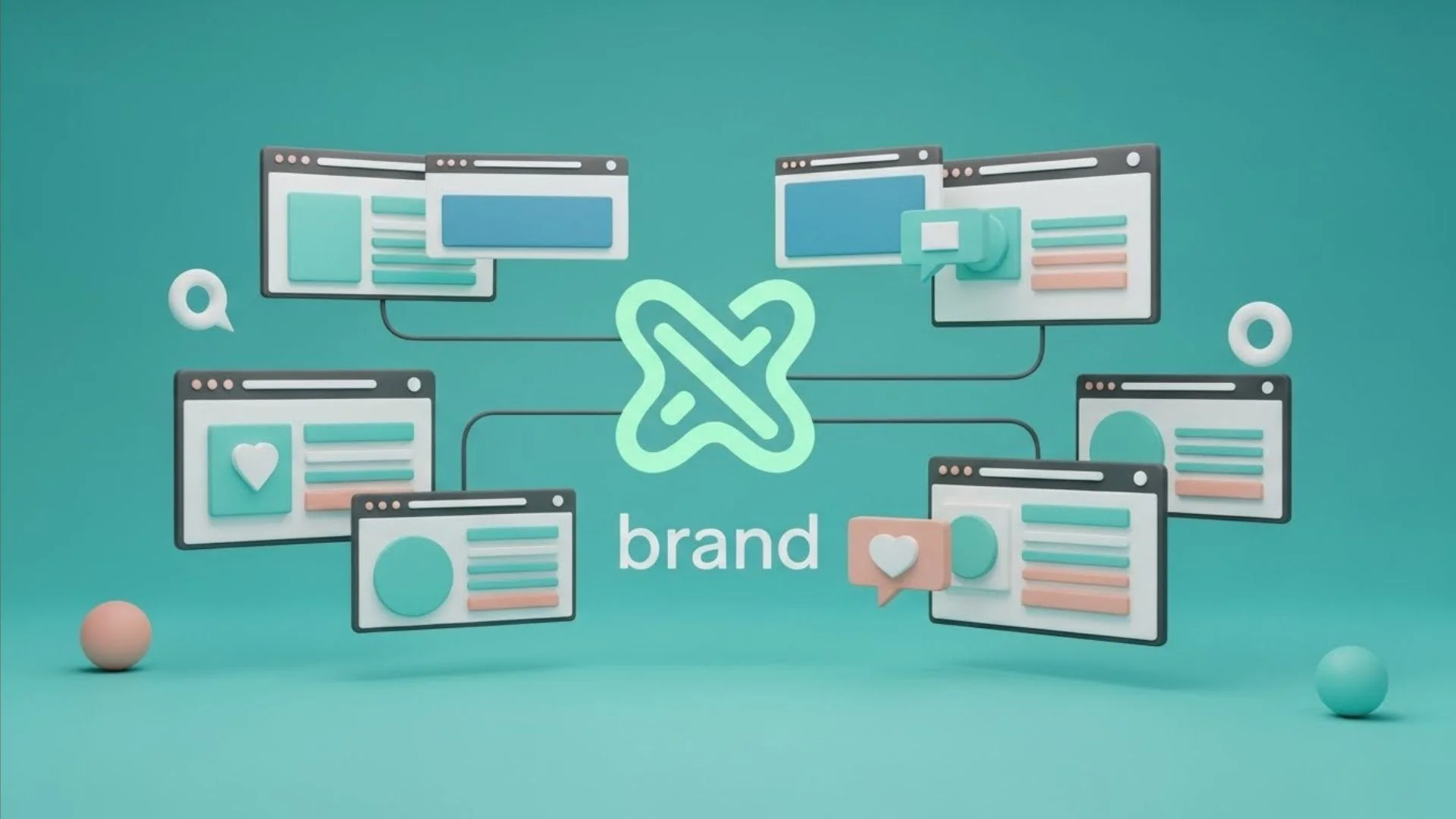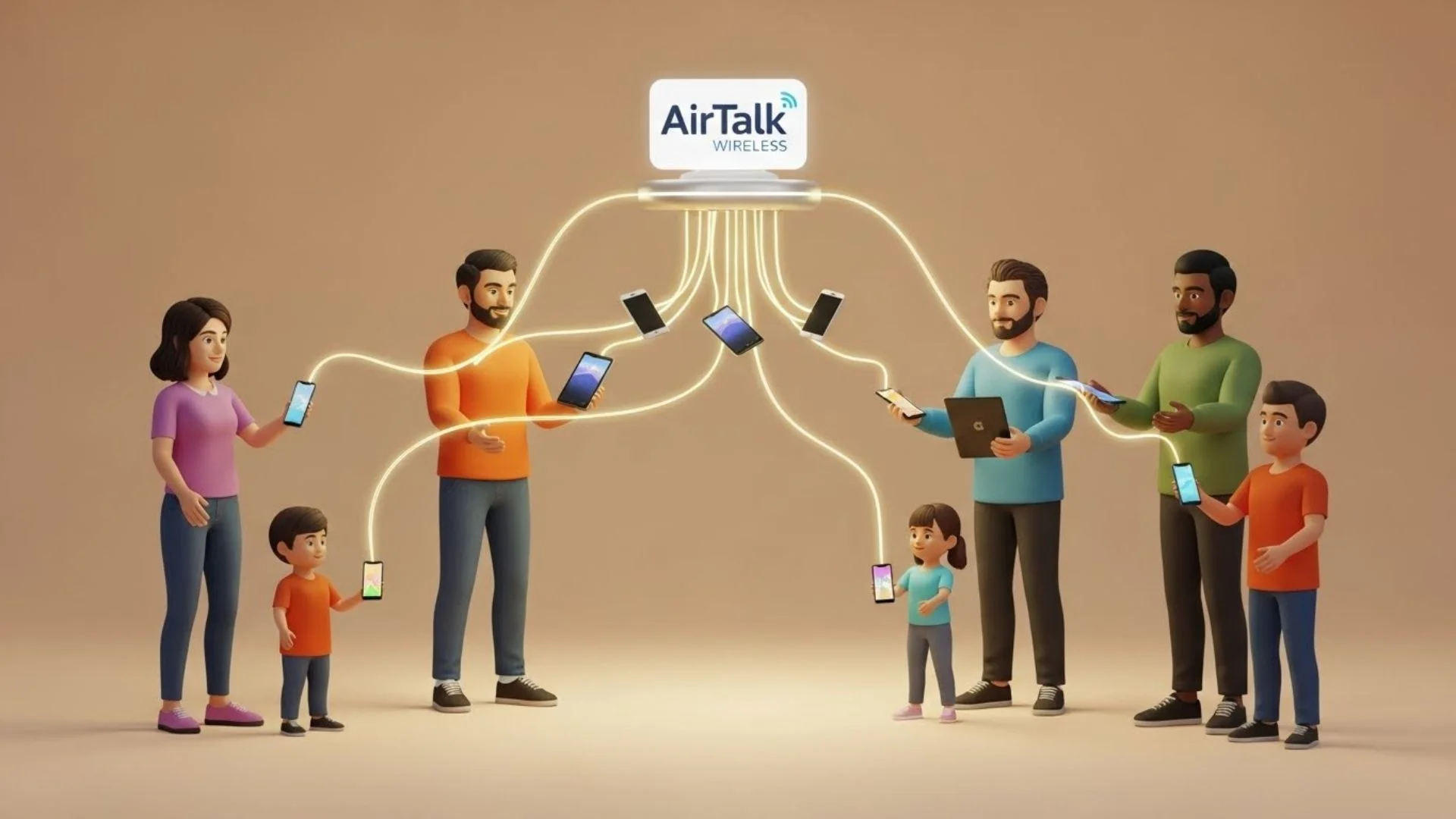No-code platforms have shifted things when it comes to the app development realm of today. With drag-and-drop interfaces and customizable templates, they make app creation accessible to businesses and individuals without technical skills. And simplifying the process nowadays is something that we all need to have. But what comes after building your app? I would put my money on monetization. As the digital economy thrives, monetizing apps has become a lucrative strategy for businesses. The U.S. app market is projected to exceed $300 billion in revenue by the end of 2025. Additionally, it’s expected to reach around $900 billion globally and on a worldwide basis. The global app market is one that is currently fuelled by innovative monetization techniques. In this guide, we will delve deep into understanding no-code app monetization and how effective this process can get.
If you’ve built an app using a no-code platform, the good news is that monetization opportunities are on your plate, and the options vary. From integrating in-app ads to offering premium subscriptions, these platforms support features that enable you to generate revenue. All without needing a team of developers to back you up or even help you. But how do you decide which strategy is best for your app? Understanding the process is something that is of the essence for you to know. Why? Because such clarifications will allow you create an efficient no-code In this guide, we’ll explore practical ways to turn your no-code app into a profitable venture. Whether you’re a small business owner or an entrepreneur, these tips will help you maximize your app’s earning potential in 2025.
What is No-Code App Development? A Quick Overview
Okay, now I am here to answer this million-dollar question that has been trending for a while now in the tech field. Why are no-code platforms ideal for app monetization? A lot of people ask that question and wonder how these platforms can top traditional app development and their technicalities with mere pre-made templates. Well, the thing is that no-code app builders are more than just platforms with pre-made templates that you get to customize. They are tools that simplify the process for citizen developers who don’t have the ability, time, need, or even resources to learn coding or programming. Wanted to study literature or marketing? Why feel bad for pursuing your dreams and wishes, yet for having a great app idea that you have no idea how to bring to life? Here is a solution for these midnight thoughts that will help you learn what you love yet be able to create an app if you have what it takes from an idea and a dream to do so.
Understanding No-Code App Builders and What They Can Offer You
No-code app builders help you create no-code apps and in the case of nandbox, you can use it to create native no-code apps. All without needing to learn or have any technical or coding background. All you have to do is start with a template that suits your app vision and industry, drag-and-drop the features you wish to have, add or create your app’s workflow, and voila! Your app is ready to be launched to the current market without any further complications. So how is it as efficient as traditional app development through hiring professionals? Well, the ones who create the templates and their functionalities are tech professionals as well.
We just take care of the backend stuff that can give you a headache and allow you to simply enjoy the easy drag-and-drop interface that our esteemed developers create for you. With that being said, I would like to add that these app builders are shaping the world as they allow you to create your apps faster, with less money, and dare I say that they allow you to have fun instead of having this process stressing you out and causing you to wish to “Turn back time to the good ol’ days when your mama sang you to sleep?” Like the great Tyler Joseph once said in his song “Stressed Out.”
Why Choose No-Code for Monetization?
The answer simply lies in their flexibility and cost-efficiency. No-code platforms drastically reduce the time and money that you will need to launch a fully functional app. Instead of spending months developing an app from scratch or paying a lot of money to hire someone or a team to do it for you, you can create one within weeks or even days. For example, if you’re running a fitness business, you could build an app with a subscription-based workout library through the usage of a no-code platform. The low barrier to entry means you can experiment with various monetization strategies without a massive financial risk.
Additionally, no-code platforms often provide built-in tools for monetization, such as payment integrations and analytics dashboards. These are features that you should keep in mind whenever you’re planning on using a no-code app builder. These features empower you to implement and track your strategies effectively. Imagine having the power to tweak your pricing model based on real-time user behavior. Additionally, it’s all possible without needing a developer. Finally, the scalability of no-code platforms ensures that your app can grow alongside your revenue. Whether you have a small user base or millions of active users, no-code tools can adapt to your needs. This adaptability makes no-code the perfect choice for entrepreneurs seeking to monetize their apps.
Top Monetization Models for No-Code Apps
When it comes to monetizing your no-code app, choosing the right model is crucial. Here are some popular options:
- In-App Advertising: Displaying ads within your app can generate passive income. Platforms like Google AdMob make this easy to implement.
- Freemium Models: Offer a free version with basic features and charge for premium functionalities. This is popular for productivity and fitness apps.
- Subscription Services: Ideal for apps delivering continuous value, like content streaming or e-learning platforms.
- E-Commerce and Affiliate Marketing: Turn your app into a sales channel. You can do that by promoting products or services.
For example, a no-code app for pet owners could use the freemium model, providing free advice while charging a monthly subscription for personalized pet care plans. Or can add services that are of a certain price, like sending a vet to a certain home visit for your furry or feathery friend. Similarly, an e-commerce app built with a no-code platform could integrate affiliate links to earn a commission on sales. Each model has its strengths, so align your choice with your app’s target audience and core purpose. Remember, successful monetization isn’t just about earning revenue; it’s about enhancing user satisfaction while doing so.
The Role of User Experience in Maximizing Revenue
User experience (UX) isn’t just another word that we’re used to reading or another trend that we follow in the app development realm; it’s like that secret ingredient I put in my lentil soup that makes it taste better than most. It’s the secret ingredient to successful app monetization. Why? Because let’s face it—users are far more willing to open their wallets for apps that provide smooth, engaging, and enjoyable experiences. In contrast, poor UX doesn’t just give a bad impression; it leads to frustrated users, high churn rates, and ultimately, lost revenue. Think of it this way: if your app feels like a chaotic, frustrating mess, people won’t stick around long enough to pay for anything. That is, no matter how great your features might be.
Take a moment to think about the placement of in-app ads. Are they strategically placed so they don’t disrupt the user’s flow? Or are they popping up at the most inconvenient times, driving users to the nearest “delete app” button? Similarly, for subscription-based apps, it’s not just about having premium content—it’s about whether that content is compelling enough to make users part with their cash. Is the value clear, or does it feel like you’re asking them to pay for something that doesn’t quite deliver? These are the kinds of questions that emphasize how tightly UX is tied to monetization success.
A User experience (UX) Example for Better Understanding
Let’s take meditation apps as an example—something as simple as breathing exercises can become addictive when wrapped in great UX. Apps like Calm and Headspace have mastered the art of user engagement with intuitive navigation, visually relaxing designs, and meaningful touchpoints like reminders and progress achievements. Even if you don’t have a hefty marketing budget, you can still achieve a similar zen state for your app by focusing on simple, effective UX principles that make users feel calm and in control, rather than overwhelmed.
To ensure your app delivers a stellar experience that users are willing to pay for, here are some tips to optimize UX:
- Conduct regular user testing to identify and address pain points.
- Keep the design minimalistic. You know that saying that says, “the more, the merrier”? Forget that, because less is often considered “more” when it comes to UX.
- Make sure monetization elements, like ads or payment prompts, fit seamlessly into the user journey, without feeling like roadblocks.
In the world of app monetization, creating a smooth, delightful experience isn’t just nice to have—it’s a must if you want to turn users into loyal paying customers.
Leveraging Analytics for Monetization Success
How do you know if your monetization strategy is working? The answer lies in data. Analytics tools give you insights into user behavior, enabling you to make informed decisions.
For instance, imagine you run a language learning app built with a no-code platform. Analytics might reveal that users frequently abandon lessons after a free trial. Armed with this information, you could tweak your pricing model, introduce limited-time discounts, or enhance the trial experience to retain users.
Key metrics to track include:
- ARPU (Average Revenue Per User): Indicates the revenue generated per user.
- Churn Rate: Helps identify how many users leave your app over time.
- Conversion Rates: Shows how many free users convert to paying customers.
With these insights, you can continuously refine your monetization strategy. Many no-code platforms, like nandbox’s native no-code app builder, have the ability to integrate seamlessly with analytics tools like Google Analytics or Mixpanel, making it easier than ever to track your app’s performance.
Pitfalls to Avoid When Monetizing No-Code Apps
Monetization is exciting because who doesn’t dream of their app turning into an ATM for cash without having to press any buttons? But let’s be real: there are challenges that can trip you up faster than you can say “in-app purchases.” Understanding and avoiding these common mistakes can save you from turning your app into a cautionary tale.
First up, overloading with ads. Sure, ads can bring in cash, but if your app starts to feel like a neon billboard in Times Square, users will flee faster than you can count your impressions. I personally hate it when an app wouldn’t function without displaying each second an ad for me. This gets very frustrating at some point and we wouldn’t want your users to feel that way, would we? Picture this: a user trying to check their to-do list but gets hit with back-to-back video ads. Frustrated, they delete the app. This could lead them to taking potential revenue with them. The moral of the story? Ads are fine, but moderation is key to their success and to the success of your app.
Neglecting User Feedback and The Risk It Holds
Then there’s the classic blunder of neglecting user feedback. Think of your users as your app’s co-pilots. If they’re constantly complaining about expensive subscriptions or confusing features, and you’re not listening, it’s like ignoring your GPS screaming, “Wrong turn!” The result? Users will jump ship, and retention will fall down the deepest pit of the Red Sea.
Lastly, beware the “throw everything at the wall” strategy. By this I mean trying every monetization option under the sun without a clear plan or objective ahead of you. One day it’s freemium, the next it’s subscriptions, then affiliate links. While experimentation is great, too much can dilute your app’s focus and leave users scratching their heads in confusion, wondering what your app is even about. The secret to success? Balance and alignment. Stick to monetization methods that enhance your app’s mission and deliver value without alienating your audience. Your users will thank you and will appreciate the effort you put in that they will obviously experience in your app.
No-Code App Monetization: Statistics and Predictions
While specific monetization statistics for no-code app development in 2025 are limited, several industry projections highlight the growing significance of no-code platforms. Additionally, they highlight their impact on app development and revenue generation. Here are some of them for better understanding of the current market projections:
- App Installations: First-time downloads are expected to grow consistently, with global app installs across both marketplaces projected to reach 270 billion in 2025.
- Market Growth: Visionpoint.systems predicts that the global low-code development market is expected to grow to $187 billion in revenue by 2030, with a compound annual growth rate (CAGR) of 31.1%.
- Revenue Impact: A statistical study that was conducted by NuCamp showed that companies adopting low-code and no-code platforms have reported a 58% increase in revenue, demonstrating their transformative impact on various industries, including banking and healthcare.
- Development Efficiency: Another statistical study that Quixy made shows that no-code and low-code platforms can decrease app development time by up to 90%. This helps in enabling faster time-to-market and potentially quicker revenue generation.
These projections suggest that as no-code platforms become more advanced with each second that passes. Additionally, the opportunities for monetizing apps built with these technologies will expand. That is, as they are driven by increased adoption, market growth, and enhanced development efficiency.
The Future of App Monetization with No-Code Platforms
As technology evolves, so does the potential for monetizing no-code apps. In 2025, we’re entering an era of unprecedented innovation in app monetization, powered by AI-driven personalization, blockchain-based payment solutions, and enhanced integration capabilities within no-code platforms. These advancements not only simplify the process of earning revenue but also enable creators to cater to a global audience with ease.
One key trend is the rise of AI-powered tools that analyze user behavior in real-time. Imagine an app that adjusts subscription pricing based on a user’s activity patterns or recommends premium features they are most likely to purchase. This kind of hyper-personalization boosts engagement and revenue while enhancing user satisfaction. Similarly, blockchain technology is revolutionizing payment systems by ensuring secure, transparent, and low-cost transactions. For instance, creators could integrate cryptocurrency payment options into their apps, opening doors to tech-savvy audiences and global markets.
Is There More to It? Yes, There Is!
Another exciting development is the growing integration ecosystem within no-code platforms. With APIs and plug-and-play modules becoming more advanced, app creators can incorporate cutting-edge tools like AR/VR shopping experiences or gamification features for better user engagement and monetization. Staying ahead in this rapidly evolving space requires continuous learning, experimentation, and the flexibility to adapt to new technologies. Entrepreneurs who embrace these trends will unlock unprecedented revenue opportunities and position their apps for long-term success in the competitive digital landscape of 2025 and beyond.
To Wrap Things Up!
Monetizing a no-code app in 2025 is not just achievable; it’s an opportunity to create sustainable revenue streams in a thriving digital economy. From choosing the right monetization model—whether it’s freemium, subscription-based, or affiliate marketing—to leveraging data analytics and enhancing user experiences, the key to success lies in strategic planning and consistent execution.
But where should you begin? The journey starts with a reliable no-code platform that empowers you to bring your vision to life. With nandbox’s native no-code app builder, you gain access to a versatile suite of tools designed to create feature-rich apps capable of scaling and thriving. Whether you’re developing an e-commerce app with secure payment gateways, a subscription-based educational platform, or a community-driven app with interactive features, nandbox equips you with the flexibility and power to monetize effectively.
Unlike other platforms, nandbox stands out with its advanced functionalities, including customizable modules, seamless integration capabilities, and robust support for monetization strategies. When you choose nandbox, you’re not just building an app; you’re crafting a digital product that aligns with your business goals and user needs. Don’t let your app’s potential go unnoticed. Explore nandbox today, and take the first step toward turning your no-code app into a revenue-generating powerhouse in 2025!
FAQs
Q1: What are the top monetization strategies for no-code apps?
Freemium models, subscription services, in-app purchases, affiliate marketing, and ad placements are some of the best options.
Q2: How can I ensure users don’t get annoyed by ads in my app?
Keep ads minimal and relevant. Avoid interrupting the user experience with too many ads.
Q3: Is a freemium model effective for monetization?
Yes, it’s highly effective. Offer a robust free version and incentivize upgrades with premium features that add real value.
Q4: What role does user data play in monetization?
User data helps personalize experiences, refine monetization strategies, and increase retention. Ensure compliance with privacy regulations.
Q5: How can I set competitive pricing for subscriptions or in-app purchases?
Research your competitors, consider your target audience’s budget, and test different pricing tiers to find the sweet spot.
Q6: What are common mistakes to avoid when monetizing no-code apps?
Overloading with ads, ignoring user feedback, and juggling too many strategies without focus are key pitfalls.
